×


We have detected your country as:
Please click here to go to the USA website or select another country from the dropdown list.
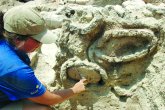
{image_1}A recent discovery at Tel Rehov near Beit Shean in the Jordan Valley shows that as far back as biblical times, Israel really was a “land of milk and honey.” Archaeologists from Hebrew University found three rows of beehives totalling more than 30 hives, all dating back to the 10th–9th centuries BC, the time of the biblical kingdoms of Israel and Judah. The hives are made of baked clay and straw and are about 15.75 inches (40 centimeters) in diameter. Remains of several bees, as well as pollen and beeswax, were found inside the hives and are being examined by experts.
Continue Reading »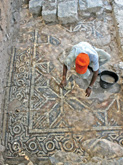
{image_1}Israel Antiquities Authority (IAA) excavations in Tiberias have exposed a Byzantine church (fourth to fifth centuries AD) paved with polychrome mosaics and decorated with geometric patterns, crosses, and dedicatory inscriptions.
Continue Reading »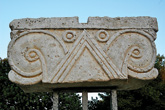
{image_1}The third season of renewed excavations at Ramat Rachel––a kibbutz (communal settlement) and popular conference center southeast of Jerusalem’s city center––has come to a close with several exceptional finds, including a piece of a proto-Ionic (or proto-Aeolic) capital from the Iron Age (seventh to sixth centuries BC). To date, only 12 such capitals have been found in Judea, with one from the City of David in Jerusalem and now 11 from Ramat Rachel. The proto-Ionic capital was also used on seals in the Early Iron Age before writing in the Israelite kingdom and can be seen today on the back of the five-shekel coin.
Continue Reading »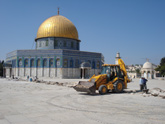
{image_1}During the summer, Arab workers began extensive work on the Temple Mount itself, with hardly a mention hitting the press. Workers dug a two-foot deep trench running the length from the northern part of the platform, where the golden Dome of the Rock Mosque is located, to the southern end of the Temple Mount complex. The work was to lay new telephone and cable lines. While the police sanctioned the work, there was no archaeological supervision, meaning that the extent of the damage done to any antiquities is unknown.
Continue Reading »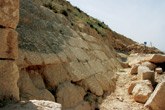
{image_1}In May, Professor Ehud Netzer of the Hebrew University Archaeology Department officially announced to the world that his team digging at the Herodian fortress just outside Jerusalem had discovered the tomb of King Herod the Great, the last Jewish king to rule over Judea (37–4 BC) before the Roman Empire took direct control.
Continue Reading »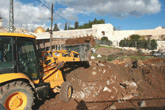
{image_1}In Jerusalem, cultures and thousands of years of history collide with each other on the most contested piece of real estate in the world, the Temple Mount. Several weeks of Arab riots and protests began this year in February after the Israel Antiquities Authority began their latest dig in an area next to the Temple Mount known as the Mughrabi Ramp.
Continue Reading »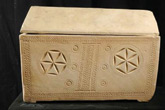
{image_1}Not so long ago came Dan Brown and Tom Hanks with The Da Vinci Code. Now another film by award-winning director James Cameron seeks to discredit what millions of Christians around the world hold so dear. Cameron, along with Israeli filmmaker Simcha Jacobovici, claims that a burial cave found in a Jerusalem neighborhood holds the remains of Jesus and several of His family members. Ten small coffins, known as ossuaries, were found in the cave with the names of several persons inscribed on them, including, according to the filmmakers, Jesus, His mother Mary, brother Joseph, Mary Magdalene, and Judah, who they claim to be Jesus’s son.
Continue Reading »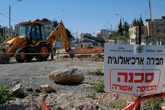
{image_1}Imagine setting out for work to prepare the ground to make way for the new Jerusalem tram line. This kind of work is undertaken by many throughout the world every day, but when you are digging in Jerusalem, anything can happen, and it did! Workers have unearthed the remains of an ancient Jewish city from the first century AD; it is under Shuafat, a modern-day Arab suburb of Jerusalem. That is some tram ride!
Continue Reading »A unique building, not found anywhere else in Israel, was uncovered in an Israel Antiquities Authority (IAA) excavation in Mishmar David between Tel Aviv and Jerusalem. The round structure, built of ashlar stones, is about 33 feet (10 meters) in diameter. The structure’s floor is paved with a multicolored mosaic decorated with geometric patterns and a palm tree motif.
Continue Reading »In the year-long excavation conducted by the Israel Antiquities Authority (IAA) at the western end of the Western Wall Plaza, a treasure trove has been uncovered. The prize includes a section of the lower aqueduct that conveyed water from Solomon’s Pools, three miles (five kilometers) southwest of Bethlehem, to the Temple Mount; a rock-hewn, plastered mikveh (place of ritual immersion); the remains of a magnificent, colonnaded street; and a covered row of shops.
Continue Reading »All logos and trademarks in this site are property of their respective owner. All other materials are property of Bridges for Peace. Copyright © 2025.
Website Site Design by J-Town Internet Services Ltd. - Based in Jerusalem and Serving the World.